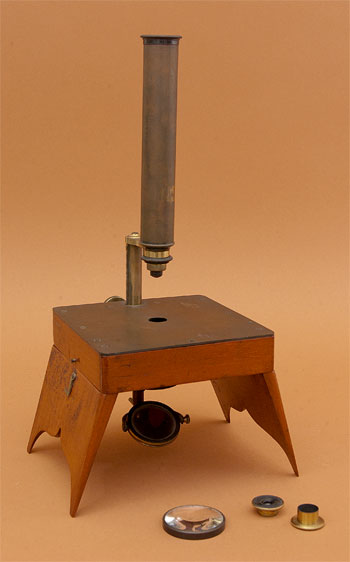 |
|||||
 |
 |
||||
 |
|||||
 |
 |
||||

All microscope components, except the compound body, can be stored into the accessory drawer. The legs fold under the instrument for storage. Imaging is remarkably good both at high magnification using the compound body and low magnification using the simple magnifier. The height of the microscope with compound body is 35.5cm.
John Thomas Quekett (1815–1861) was a Professor of Histology at the Royal College of Surgeons of England, secretary of the Royal Society of London from 1841–1860, and president of the RMS from 1860–1861. Quekett became interested in microscopic investigation early in life. At sixteen he gave a series of lectures pertaining to his microscopical investigations using an instrument of his own construction. Later he designed the instrument shown here as a solution to the small sample stages of the dissecting microscopes of the time. Carpenter, in The Microscope and its Revelations (1856) described the Quekett microscope stating that it was "extremely convenient" for sample manipulations and that even though the mirror adjustment was difficult, "These inconveniencies...are a trifling when compared with the great facilities afforded for scientific investigation by the size and firmness of the stage". Aside from being an accomplished histologist and prolific writer, Quekett was also a collector of antique microscopes, several of which now belong to the RMS.
John's brother Edwin John (1808–1847) founded the RMS at his home on September 3, 1839. Included at the founding meeting was Joseph Jackson Lister, inventer of the first achromatic microscope objective.
*Hogg, J. 1867. The Microscope: its History, Construction, and Applications. Sixth Ed. p38.
Featured 12/2013